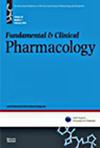Cannabinoids and Adverse Convulsive Effects: A Pharmacovigilance and Addictovigilance Analysis of Cases Reported in France
Abstract
Background
Seizures after the use of cannabinoids are reported, but no precise descriptions of the characteristics of subjects and factors that may trigger seizures are available.
Objectives
To study the characteristics and circumstances associated with the occurrence of seizures in individuals using cannabinoids for medical or recreational purposes.
Methods
A retrospective analysis of spontaneous reports of adverse drug effects issued by the French pharmacovigilance and addictovigilance systems, and by manufacturers, extracted data from the Eudravigilance database (01/01/1985–21/07/2023). The request used the broad MedDRA SMQ term ‘convulsive’, with all products containing cannabinoids (THC, CBD, cannabis or natural cannabinoids).
Results
Among 4296 notifications with cannabinoids, 130 (3%) reports of convulsive effects were analysed: 29 cases (23.3%) related to medical use (27 CBD, 1 THC and 2 combined THC/CBD preparations) and 98 (75.4%) related to recreational use. The median age was 29.0 years (min-max: 3–75), 78.7% were men and 81.1% were serious cases. Among the recreational users, 38.8% used Cannabis sativa with a history of epilepsy, and 68.4% of them were taking antiepileptics. In total, 67.7% of individuals had at least one risk factor for seizures, i.e., 31.0% among medical users and 78.6% among recreational users. The main risk factors with medical use were inefficacy of CBD (17.2%), fatigue (13.8%) and concomitant epileptogenic medications (10.3%). The main risk with recreational use was concomitant epileptogenic medications (39.8%), consumption of illicit drugs (33.7%) and alcohol (32.7%).
Conclusion
This analysis demonstrates the importance of alerting cannabinoid users, particularly recreational cannabis users and those with a history of epilepsy, about seizure-associated risks. Moreover, educational information should be provided together with the prescription of licensed cannabinoids and medical cannabis.


 求助内容:
求助内容: 应助结果提醒方式:
应助结果提醒方式:


